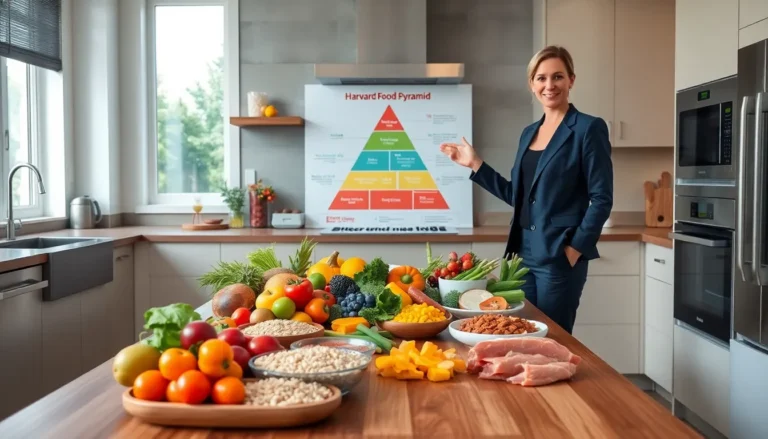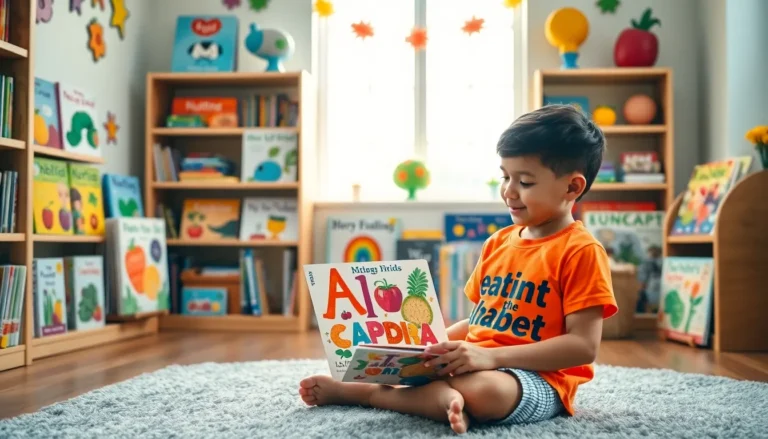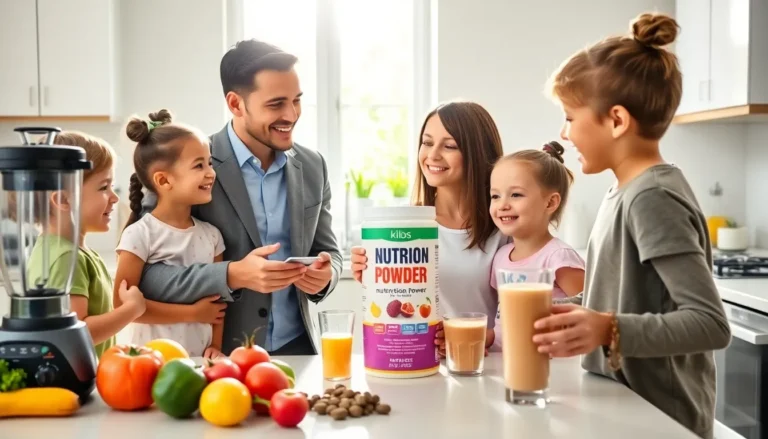Table of Contents
ToggleWhen it comes to raising healthy, happy kids, teaching nutrition can feel like trying to get them to eat broccoli, challenging yet crucial. Imagine a world where children understand the importance of what they put on their plates. Wouldn’t it be fantastic to turn the table on mealtime battles and make nutrition a fun adventure? Luckily, nutrition books for kids can pave the way. These helpful reads not only educate but also engage young minds, transforming the way they think about food. Let’s jump into the importance of instilling healthy habits early on and explore some top-notch books that make the learning experience delicious.
The Importance Of Teaching Nutrition To Children

Instilling a solid understanding of nutrition in kids is more than just a buzzword, it’s a fundamental tool for a lifetime of healthy living. Children are naturally curious. If they learn about the benefits of nutritious foods early on, they’re more likely to make healthy choices as they grow. Teaching them why vegetables are vital or how fruits can help their bodies can foster decision-making skills around food while cultivating a positive relationship with it.
Also, childhood is often the time when preferences are formed. Children develop tastes for food based on experiences, exposure, and education. By emphasizing nutrition, parents can help kids understand not only the ‘what’ but also the ‘why’ behind their food choices. Plus, integrating fun learning resources like nutrition books can enhance interest and encourage discussions at the dinner table.
Top Nutrition Books For Different Age Groups
Finding the right nutrition book is like choosing the perfect snack, it should be engaging, nutritious, and tailored to taste. Below are some fantastic selections for different age groups that cater to their varying levels of understanding.
1. Picture Books For Young Children
For the tiniest of foodies, picture books bring nutrition concepts to life through vibrant illustrations and simple language.
A popular choice is “Eating the Alphabet” by Lois Ehlert, which introduces fruits and vegetables through eye-catching visuals and catchy rhymes. Another delightful read is “The Very Hungry Caterpillar” by Eric Carle. Although it’s not solely focused on nutrition, it highlights the importance of varied foods and portion sizes, all while captivating little imaginations.
These books are excellent for sparking curiosity about different foods and can lead to fun conversations about eating.
2. Interactive Books For Preschoolers
As children enter preschool, adding a layer of interactivity can make learning about nutrition even more exciting. Books like “Food for Thought:The Complete Guide to Nutrition for Kids” by Tania Marghescu encourage kids to actively participate by asking questions and prompting them to think critically about their food choices.
Interactive reads like “Let’s Make a Salad” allow young readers to engage directly with the text, making food preparation a part of the story. These types of books help develop motor skills and strengthen cognitive connections around healthy eating.
3. Engaging Reads For Elementary Age
As kids enter elementary school, they are ready for more substantial content. Books like “The Food Lab: Better Home Cooking Through Science” by J. Kenji López-Alt, while aimed at older children, can both teach them about the science behind cooking and inspire budding chefs. Another great pick is “How to Eat a Rainbow” by L.J. Tracosas, which presents colorful, engaging narratives showing the benefits of eating a variety of foods.
These reads captivate elementary-aged children and arm them with essential nutrition information. They encourage kids to explore different food categories, setting a foundation for lifelong healthy eating.
Cultivating Healthy Habits Through Nutrition Education
Establishing a connection between reading and healthy habits can significantly impact children’s choices. Encouraging regularly reading nutrition books cultivates a mindset where food choices are not merely automatic but are made with intention. For instance, after reading about the food pyramid, a child might be more likely to reach for a fruit as a snack rather than a sugary treat.
Also, family discussions around the knowledge gained can create a collaborative environment for choice-making. This means fewer power struggles at mealtime and a shared journey toward understanding healthy diets.
Creative Approaches To Encourage Reading And Learning
Books are just the beginning. To foster a love for nutrition-related topics, consider these creative approaches:
- Cooking Together: After reading a recipe or healthy eating book, create a meal as a family. This not only reinforces what they’ve learned but provides hands-on experience.
- Gardening: A home garden can be an excellent extension of learning. Letting children see food grow can peak their curiosity about where their meals come from.
- Field Trips: Pop into a local farmer’s market or a farm to explore fresh produce firsthand. Inspiring kids to learn through such experiences makes nutrition fun and memorable.
Mixing education with activities keeps children engaged and provides them with a multifaceted understanding of nutrition.







